#1940s pulp sci fi
Text

Amazing Stories (Ziff-davis, 1940)
More Venus-related nonsense! (See: last post!)
Cover: H R Hammond.
#pulp#pulps#pulp sci fi#pulp science fiction#science fiction#horror#pulp art#sci fi#1940s sci fi#1940s science fiction#1940s pulp sci fi#1940s pulp#40s pulp#40s science fiction#40s sci fi#fish#venus#planet venus#amazing stories#ziff-davis
25 notes
·
View notes
Text
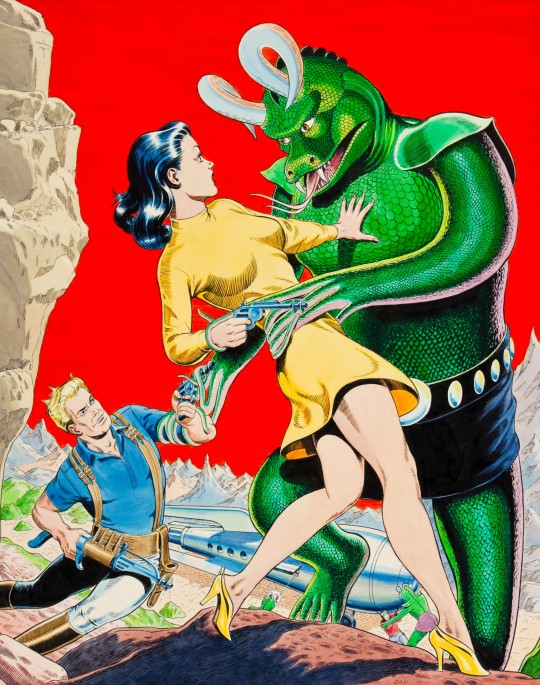
Lizard Tyrant of the Twilight World - art by Dan Zolnerowich
#dan zolnerowich#planet comics#40s sci-fi art#pulp art#comic art#cover art#lizard tyrant of the twilight world#fiction house publishing#1940s#1943
155 notes
·
View notes
Text

Lawrence Sterne Stevens (American, 1884-1960), illustration for "The Lost Continent" by C.J. Cutcliffe Hyne from the December 1944 issue of Famous Fantastic Mysteries.
22 notes
·
View notes
Text
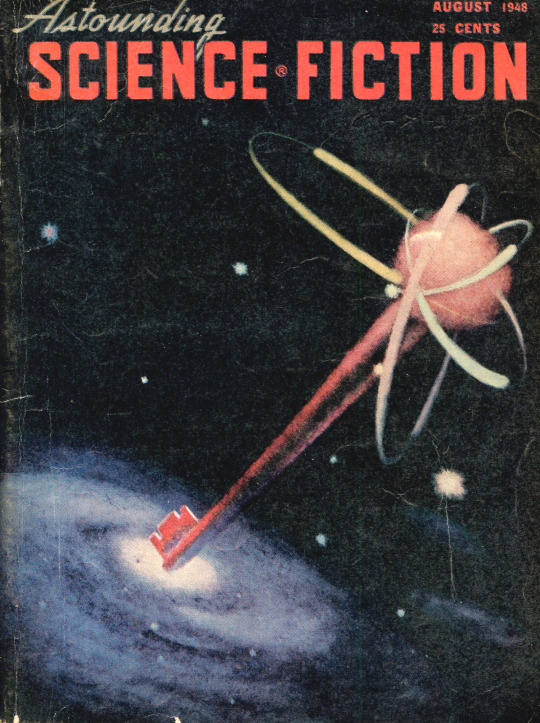
Cover by Alejandro
#vintage illustration#cover art#coverart#magazine#magazine cover#astounding#science fiction#scifi#1948#1940s#1940's#pulp magazine art#pulp fiction#pulp science fiction#pulp sci fi#ephemera
12 notes
·
View notes
Text

Cover by Earl Bergey.
Thrilling Wonder Stories v33 n02 [1948-12) with artwork inside by Virgil Finlay.
Here's some of Finlay's work I like from this issue that zontar found:
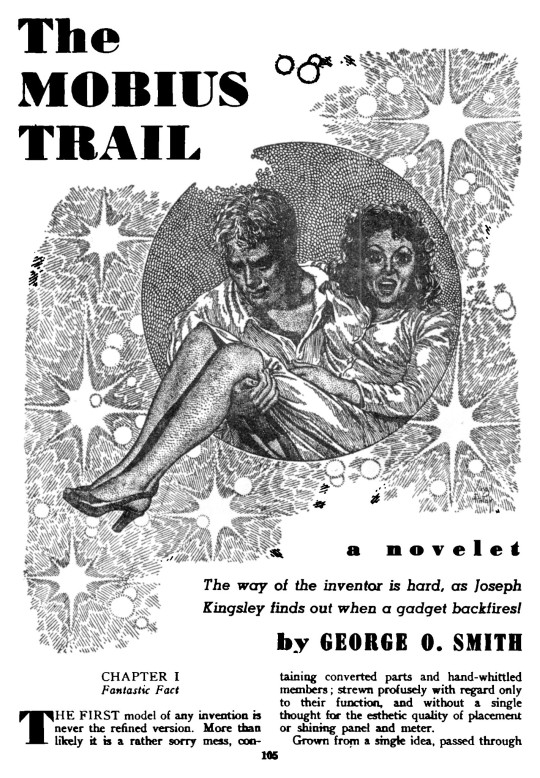

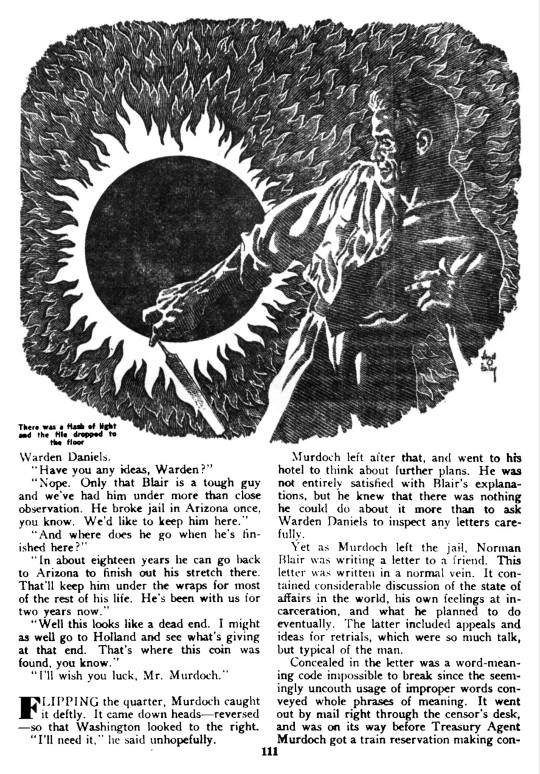

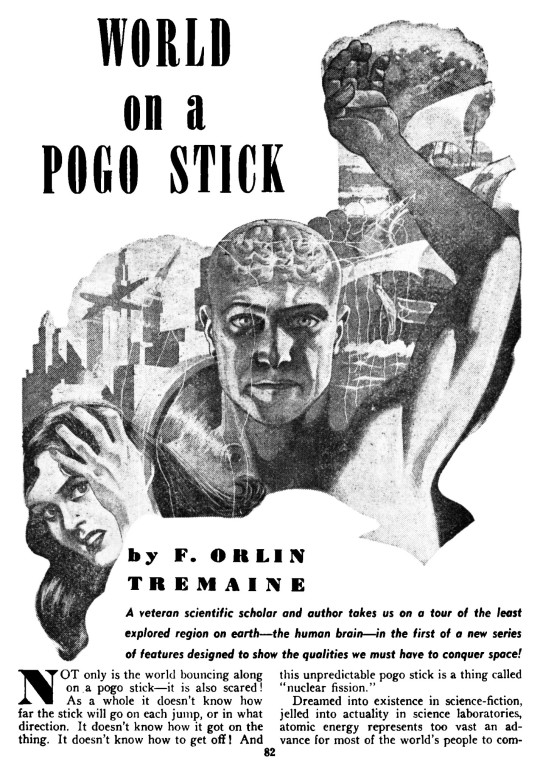
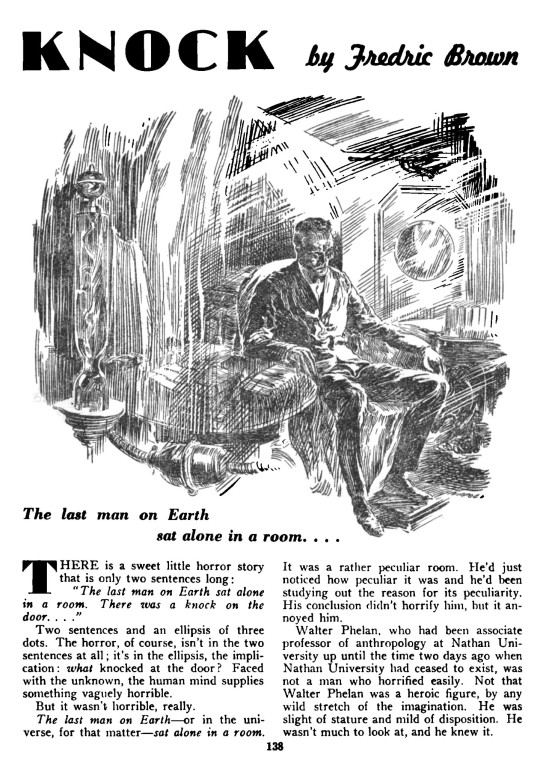

#zontarmag#pulp magazine#pulp art#sci fi art#thrilling wonder stories#virgil finlay#earl bergey#science fiction#1940s sci fi#circa 1948
3 notes
·
View notes
Text
Spicy Adventure Stories "When Planets Mate" cover (magazines, 1941)
September 1941 issue

0 notes
Text

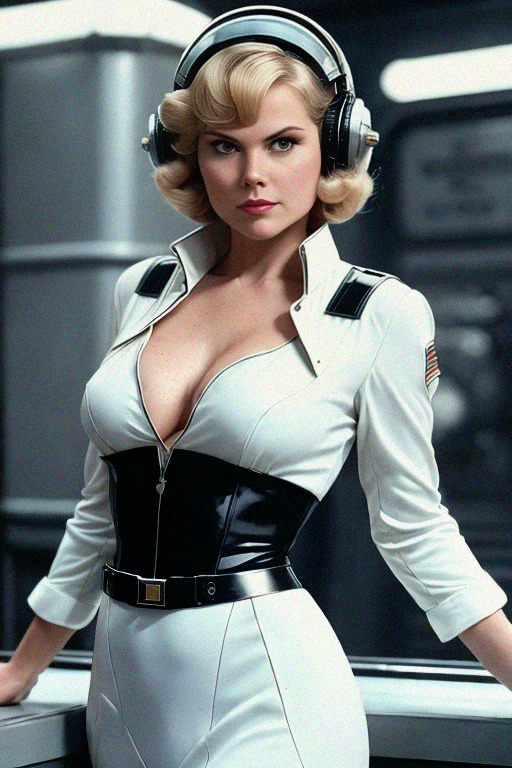
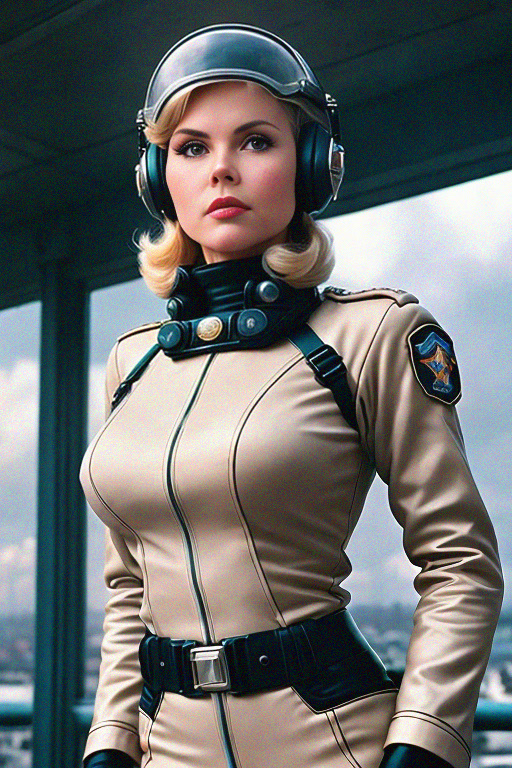

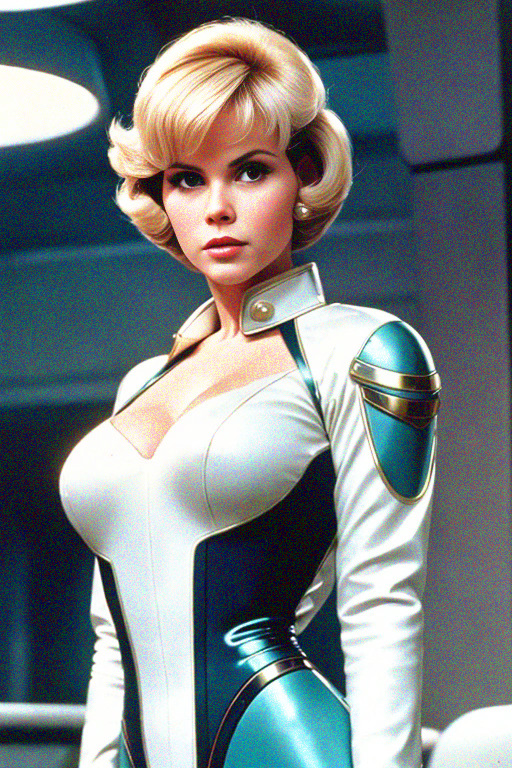
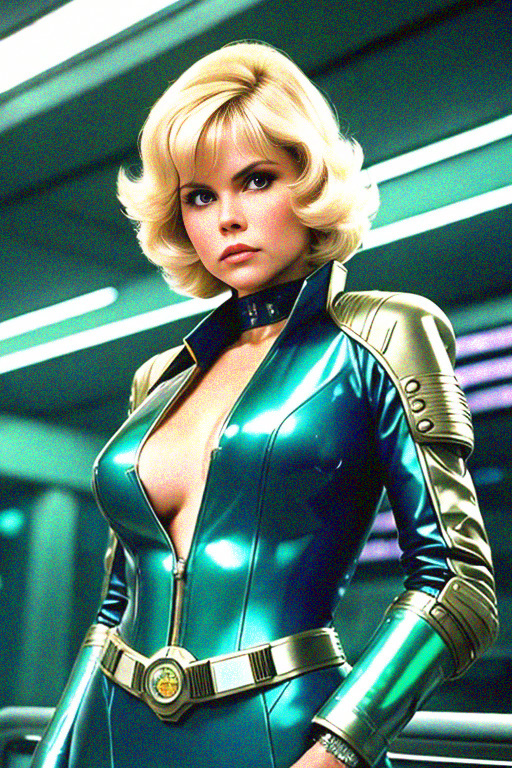
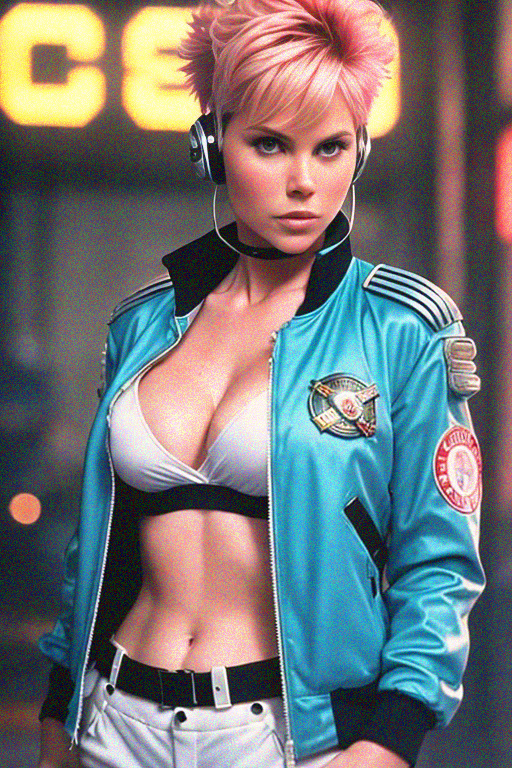
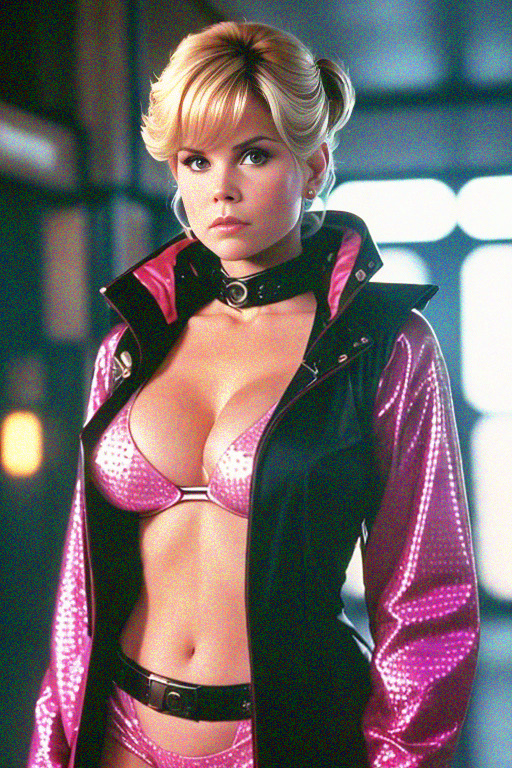
Other timelines, other lifetimes. A look at Spacetime Sally in different sci-fi eras: (1 & 2) Pulp Era sci-fi of the 1920s and 30s, (3) WWII Dieselpunk scifi of the 1940s, (4) Atomic Age Atompunk sci-fi of the 1950s, (5 & 6) New Wave sci-fi of the 1960s and 70s, (7) Cyberpunk sci-fi of the 1980s, and (8) Gothic sci-fi of the 1990s.
#scifi#science fiction#retro#space girl#spacegirl#retro futuristic#retro futurism#retro scifi#art#artwork#ai artwork#ai art#ai photo#ai fashion#ai girl#scifi fashion#scifi aesthetic#scifi fantasy#scifi art#scifiart#retrofuturism
65 notes
·
View notes
Note
recs for old/classic sci fi? (or modern sci fi with pulp sci fi vibes!!)
Oh yes, I got you. Here's a few I've been thinking about recently.
🌐 The Caves of Steel by Isaac Asimov (1954), detective Elijah Baley must solve the murder of a spacer on Earth ground with the help of R. Daneel Olivaw. This is one of my favorite books ever, I have read it a few times and there's also a Radio Drama from the late 80s by the BBC somewhere out there which I enjoyed.
🌾 La Invención de Morel by Adolfo Bioy Casares (1940), a fugitive finds himself in a deserted island, one day tourists show up and he believes it necessary to hide - least they turn him in. He falls in love with a woman from the group and eventually decides to confess but strange events keep them apart.
🎲 Solar Lottery by Philip K. Dick (1955). There are small bits of this book I don't like but that's just life, overall it's interesting. It's also PKD's first published novel. Anyway, summary (grabbed from wikipedia because I couldn't find words to explain it myself)
Lotteries are used to choose the next leader as well as a new assassin, whose job is to try to kill the leader or "Quizmaster". Everybody in society has the opportunity to be selected as a leader or an assassin. Benteley unexpectedly gets chosen to be a member of the committee trying to assassinate the new Quizmaster and he must decide what he is going to do.
🌠 2001: A Space Odyssey by Arthur C. Clarke (1968). Not too long, well written, beautiful. Arthur C. Clarke does some really nice descriptions honestly. If you like this one, I recommend the rest of them (2010, 2061, 3001). This was published after the movie so it's similar in many ways but I think it manages to stand out very well on its own; being a different medium, you get a different perspective.
10 notes
·
View notes
Text
Using Familiar Ideas to Create an Immersive and Convincing Futuristic Setting
Following my research on Bladerunner, which uses 70s style film structures and the influences of 1940s and 80s fashion, I have decided to choose vintage art styles to create a distant but familiar mood with my sci-fi dystopian television show.
Pulp Art
Pulp art according to Mai Ly Degnan is ‘most known for their exploitative fiction and controversial cover art. Pulp covers were always on higher quality paper and were usually high contrast and brightly saturated colors. The cover art on pulps were so important to the publication, that often times the art was actually made first.’
Using this method of creating posters for my television series and then building a narrative around this could assist not only with storytelling, but focus on artistic style, individuality and character portrayal. To me, there has not been a 2D animated series even close to this artistic style, which would stand out against competitors.
Below are some examples of Pulp Art:

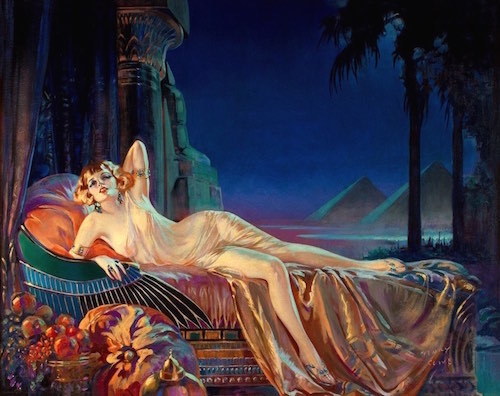


Looking on this work and Pulp Art in general, it is clear how much this style has been influenced by historical art and impacted modern pop art. The pin up style of the women, typically trendy in appearance for 1930s-1950s, which would generally be the soft porn eye catching attraction for the audience. The artistic poses of religious renaissance paintings as well as the metaphorical and symbolistic vanitas motifs create perfect storytelling as well as portray a luxurious sense to the movie. Pulp art would mostly be used for film posters and thus must be eye-catching, aesthetically pleasing and perfectly summarise the narrative. Have a sexy woman on the front, a shocking dynamic scene and an expansive array of colours and you have yourself a successful sell out to the cinema.
I intend to use these methods and concepts and apply a futuristic twist. Following the desire to create a cult television show, having dynamic and artistic movie posters and overall animated design creates a perfect opportunity for merchandising and style influences which creates a niche for the audience to enjoy and feel personally connected to.
Bradway, R. (2013). Pulp Magazines and their Influence on Entertainment Today By Mai Ly Degnan - Norman Rockwell Museum - The Home for American Illustration. [online] Norman Rockwell Museum. Available at: https://www.nrm.org/2013/04/pulp-magazines-and-their-influence-on-entertainment-today-by-mai-ly-degnan/#:~:text=Pulps%20were%20most%20known%20for [Accessed 14 May 2023].
3 notes
·
View notes
Text
“Jack Kirby: The King of Comics”
Captain America! The X-Men! The Fantastic Four! The Incredible Hulk! You know the names, but how many of you know the artist who created these memorable Marvel Comics characters? Read on, faithful funny book fans, and find out!
Jack Kirby was born Jacob Kurtzberg in New York City on August 28, 1917. His artistic career began in 1935, when he got a job working on Popeye and Betty Boop cartoons for Max Fleisher Studios. He then moved on to drawing comic strips for the Lincoln Newspaper Syndicate, including “Socko The Sea-Dog,” “Abdul Jones,” and “Black Buccaneer.” He also made money by freelancing for pulp novel illustrations.
Kirby joined the Eisner-Iger Studio in 1938, and his first comic book work appeared in Jungle Comics and Jumbo Comics. Shortly after, he worked on such characters as Blue Bolt, Blue Beetle, Red Raven, and Captain Marvel (more commonly known today as Shazam). And it was in 1941 that Kirby debuted one of his first and greatest creations: the patriotic hero Captain America.
After serving in the U.S. Army during World War II, Kirby resumed his career and contributed his talents to several different comic book publishers, including National Periodicals (later known as DC Comics), Harvey, and Crestwood. During the late 1940s and early 1950s, he, along with Captain America co-creator Joe Simon, helped produce such titles as Young Romance (the world’s first romance comic), Black Magic (one of the most highly-regarded horror comics of the 1950s), Boy’s Ranch, Boy Commandos, and Star Spangled Comics (which featured Simon and Kirby’s “Newsboy Legion”).
In 1954, Simon and Kirby formed their own comic book company, Mainline Comics. Together, they published Bullseye, In Love, Foxhole, Police Trap, and Fighting American (which was a parody of their earlier creation, Captain America). However, their company and partnership ended in 1956. After a social backlash made parents believe comic books were a bad influence on children, Simon left the industry for a career in advertising. Kirby stuck with comics.
After a brief return to Prize Comics (formerly Crestwood), Kirby went back to work for DC Comics. While there, he illustrated numerous sci-fi and mystery titles, most notable of which was one of his latest creations, the non-superpowered superheroes, the Challengers of the Unknown (who made their debut in Showcase #6 before moving onto their own title a year later). Kirby divided his time between doing comic work and working on the “Sky Masters of the Space Force” newspaper strip to try and make enough money for his family to live on.

In 1961, Kirby didn’t need to worry about money anymore. Writer and editor Stan Lee hired Kirby to help him create a line of characters for a new comic book publisher called Marvel Comics. Kirby (nicknamed Jack “King” Kirby by Lee) created, along with Lee, such classic characters as The Fantastic Four, The Hulk, The X-Men, The Avengers, Thor, Iron Man, and the Silver Surfer. The only title Kirby didn’t work on was The Amazing Spider-Man (not that he didn’t have a hand in creating the character, but that's another story). Never before, and never since, has any comic company, or creator, created so many original and important characters as Marvel and Kirby during the 1960s.
Even though Kirby created some of the world’s best-known comic characters, he wasn’t happy. After almost a decade of feeling he wasn’t receiving as much credit as he should have, he left Marvel in 1969. Soon after, he returned to DC Comics for a third time. He joined DC again because they promised him complete control over the titles and characters he created.
1971 saw the debut of Kirby’s epic trilogy of Mister Miracle, The Forever People, and New Gods (which revolved around the father-son conflict between the epitome of evil, Darkseid, and his noble son, Orion). Also included in the “Fourth World” saga, and used as a link to connect these books to the rest of the DC “universe” was Superman's Pal Jimmy Olsen. Even though they sold moderately well, they were canceled after a couple of years. It was rumored that since Kirby couldn't recreate his huge success with Marvel, DC thought the books shouldn’t continue.
Though disappointed by DC’s cancellation of his grand epic, Kirby continued on with the company. He created more mainstream titles like The Demon, Kamandi: The Last Boy on Earth, and O.M.A.C. (One Man Army Corps). However, these titles failed to attract much attention, either, and Kirby left DC once again.
1976 brought Kirby’s triumphant return to Marvel and, more importantly, his return to one of his earliest creations: Captain America. But this time, Kirby was not only drawing Cap, but he was also writing the star-spangled hero’s adventures. Other titles that Kirby wrote, drew, and created during his return included The Eternals, Devil Dinosaur, Black Panther, 2001: A Space Odyssey (based on ideas and concepts from the movie), and Machine Man (which was a spin-off of the 2001 comic).
Around 1979, Kirby vanished from comics for a few years. He went back to working in the field of animation, providing storyboards and character designs. The most notable cartoons he worked on were “The Fantastic Four” and “Thundarr The Barbarian.”

In 1981, Kirby returned to comics. Avoiding the two big companies (Marvel and DC), he began working for a new independent publisher called Pacific Comics. His creations there included Captain Victory and the Galactic Rangers and Silver Star. The titles and the company were short-lived.
Some of Kirby’s last comic work was once again at DC Comics. In 1984, besides working with all the major DC characters in two “Super Powers” mini-series, he was invited back to finish the saga of his Fourth World characters. The resulting graphic novel, entitled The Hunger Dogs, was released. Editorial control ran rampant, and the book was a mess of redrawn and rearranged story pages. Kirby’s final word on the New Gods was nowhere near his original vision. Resentful from the experience, Kirby’s career was nearing its end.
After a brief stint creating a line of superhero books (called, appropriately enough, “The Kirbyverse”) for another new company in the early 1990s, Topps Comics, Kirby’s final comic, Phantom Force, was for Image Comics in 1993. It gave new, younger artists a chance to work with one of history’s greatest talents. The series only lasted eight issues, ending shortly before Kirby’s death on February 6, 1994, at the age of 76.

With a career that spanned seven decades, Jack Kirby was the most prolific comic artist in history. He is credited with being one of the most influential creators in the industry, and his influence can be seen and felt in nearly every comic book published today. Every comic book reader8and creator owes him a debt of gratitude.
Copyright © 2023 Larry Dempsey. All rights reserved.

Commentary for “Jack Kirby: The King of Comics”
–This was the seventh assignment for my “Writing for Children and Teenagers” correspondence course, which I took through the Institute of Children’s Literature.
–My teacher called my article a “good, clear job” and said that it “is nicely organized and engaging.” He also remarked that I had “an enticing opener” and a “good close.”
–My teacher also said, “I feel you have a submittable item with your Assignment 7 piece on Jack Kirby. It reads well, and you seem to cover the subject nicely. You engage the reader well by talking to him and asking the occasional question. Good!”
–I never submitted my article to a magazine for publication. My teacher said I needed to include a bibliography, but since I was too lazy to go back and track down all of my sources again, I let it slide. It’s a shame. I probably could have made a little money doing a series of biographies of famous comic book creators. Missed opportunity.
–For the most part, I don’t like writing non-fiction. I don’t like having to cite sources and check for accuracy. I feel too restricted. I also fear I might accidentally include something inaccurate, either by citing an unreputable source or for whatever other reason. I like writing fiction better, where I can do whatever I want without having to verify anything. Maybe I just like it better because, again, I’m lazy. Nah. I like writing fiction better because I get to use my imagination. Yeah. Let’s go with that.
1 note
·
View note
Text
Yesterday Looks At Tomorrow: HIGH TREASON (1929; sound version / US edit)
Skipping back to High Treason, a 1929 film that is simultaneously the silliest yet liveliest of our trio of vintage futuristic films.
It’s the least expensive looking of the three, and while the special effects work is interesting, it’s far below the quality of Metropolis and Things To Come.
But -- Surprise! Surprise! -- it comes closer than either of the other two in predicting the future!
Filmed and released in two versions -- silent and sound -- High Treason was long considered a ultra rare film almost impossible to view.
Thank God for YouTube. Their version is colorized, which gives it a nice pulp sci-fi feel. I recommend adjusting the speed setting to 1.5X to pick up the pace.
Based on a play by Noel Pemberton Billing (and ye cats, even though the field of science fiction is crowded with world class eccentrics, this guy easily makes the finals!), it predicts a future (1940) in which the world is divided between The United States of Europe (basically the former English Empire) and the Empire of the Atlantic States (basically the US and South America).
After a border incident (presumably on the former US / Canada border though it’s hard to tell), we learn a sinister cabal of terrorists and war profiteers are planning to stir up another world conflict to line their pockets.
It should be noted that all sides in politics have their adherents who feverishly believe such cabals are the rule rather than the exception, and too often act on spurious accusations rather than recognize their own contributions to current problems.
But I digress…
In what was merrie olde England we find Dr. Seymour, leader of the Peace League, trying to persuade the president of the US of E not to declare war on the E of AS. As is to be expected, his daughter Evelyn has the hots for Michael Deane, leader of the US of E air force.
The terrorists blow up the Chunnel and push both sides closer to war. The president of the US of E orders universal mobilization; Evelyn is drafted to work in a munitions plant. Dr. Seymour keeps trying to persuade the US of E not to go to war. The terrorists bomb the Peace League headquarters but Dr. Seymour survives. The president of the US of E indicates he will declare war. Evelyn persuades the other female munitions workers to block the US of E air force from taking off; they face down a platoon of soldiers sent to kill them. Dr. Seymour goes to make one last effort to persuade the president of the US of E not to declare war and when the president gets ready to announce the declaration on television, Dr. Seymour shoots him!
Yes, you read that right.
Anyway, war is somehow averted (because killing a superpower’s leader just as he’s about to declare war will of course get everybody to realize they’ve been a bunch of silly billies), Dr. Seymour is put on trial for murder, and the final verdict is left up to the audience.
Noel Pemberton Billing was simultaneously an avowed pacifist and a promoted of air power. He was a big proponent of saturation bombing and hated Germans with a passion that led him to accuse Germany of sending over homosexuals to seduce red blooded English men.
The version of High Treason I saw was the roughly hour long US theatrical sound release; the silent and sound UK releases run 97 minutes.
It’s a goofy film but it’s not a bad one. There’s certainly passion in the project, no matter how ridiculous or cliché the story.
And it’s actually about something. It’s easy for us to overlook the enormous psychic damage World War One did on Europe, particularly England. They lost enormous numbers of young men, traumatizing families and communities in the aftermath.
Most Europeans did not want war ever again in the 1920s and early 30s, and as Goering observed, it took relentless propagandizing by Hitler and the Nazis to stir up trouble in Germany, forcing the rest of the world to rearm. For a science fiction film to suggest another such war could be averted was a welcome fantasy for many.
While many English reviewers liked the film, by and large critics eviscerated it. It’s very clearly influenced by Friz Lang’s Metropolis as well as other films of his including Spione and the Dr. Mabuse series.
While imaginative and striving for epic scale, High Treason also reveals its budget limitations, sometimes in good / ingenious ways (the bombing of the Chunnel is accomplished with a lot of flicker images instead of detail effects shots), sometimes in bad / cheap ways (a brief reaction shot lifted from Battleship Potemkin is instantly recognizable by film buffs everywhere).
But as inept and as inexpensive as it may appear at times, it’s also trying to say something worthwhile. For all its sins and shortcomings, the passion it brings feels genuine.
How well did it predict the future?
Surprisingly well. The Nazi / terrorist linkage is noted above. The date of the start of the war isn’t far off. They assumed Prohibition would still be a thing in 1940. The costumes look like things people might wear. There’s a lot of T&A (not uncommon in European films of the era, very uncommon in US films); at one point Evelyn wears a costume that makes it appear she’s half dressed above the waist (she also gets a lengthy shower scene to a jazz accompaniment; the producers knew what would keep the meat in the seat). The futuristic dance is not sillier than real dances of the 1940s / 50s / 60s and the film features a musician / DJ who plays pseudo-synth music by using a futuristic keyboard to get music from dozens of remotely operated instruments. The communication screens don’t look very different from an iMac. In terms of details, this came the closest of the three.
Is it a Big Film with Big Ideas?
Yes. The idea of governments being pushed into war even against the will of their citizens gives this more gravitas than dozens of better films, and while the problem is personified in Evelyn, the factories and nightclubs are filled with dozens of characters who convey the full range of responses to the possibility of war.
Bonus: Raymond Massey of Things To Come is also in this film as a cabinet maker
© Buzz Dixon
#High Treason#Metropolis#Things To Come#Noel Pemberton Billing#media#science fiction#sci-fi#sci-fi movies#duty now for the future
0 notes
Text

CAPTAIN MIDNIGHT #55 (Fawcett, 1947)
Art: Charlie Tomsey, possibly?
Crikey! Is he... executing that alien? Jeez, down with the Interplanetary Prison-Industrial Complex!
#pulp#pulps#science fiction#pulp science fiction#comics#sci fi#pulp sci fi#40s pulp sci fi#1940s pulp sci fi#40s science fiction#40s pulp#fawcett#fawcett publications#fawcett comics#captain midnight#alien#aliens#alien jail
18 notes
·
View notes
Text
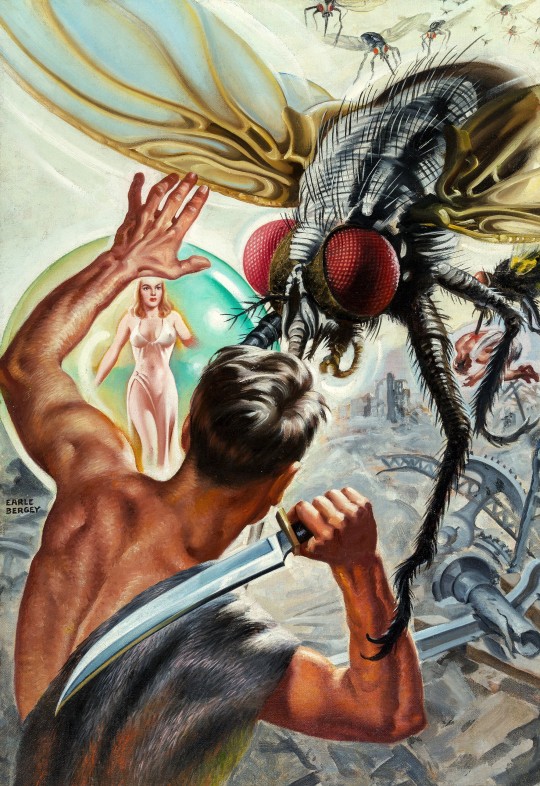
The Sleeper is a Rebel - art by Earle Bergey (1948)
#earle bergey#pulp art#40s sci-fi art#thrilling wonder stories#pulp artists#cover art#giant insects#science-fiction#the sleeper is a rebel#1940s#1948
284 notes
·
View notes
Photo

Amazing Stories, August 1943 (Ziff-Davis Publishing Company)
Artist: Robert Fuqua
#robert fuqua#amazing stories#ziff-davis publishing company#pulp#sci fi#science fiction#fantasy#1943#1940s
30 notes
·
View notes
Text

Vintage Pulp - Spicy Adventure Stories (Aug1940) (Culture)
#Spicy Adventure Stories#Pulp#Pulp Art#Pulp Illustration#Spicy#Sci-Fi#Science Fiction#Science Fiction Art#Science Fiction Illustration#Culture#Culture Publications#Vintage#Art#Illustration#Design#1940#1940s#40s
65 notes
·
View notes
Text


Vintage Pulp - Super Science Stories (June1944) (Canadian Edition)
#Super Science Stories#Pulp#Pulp Art#Pulp Illustration#Science Fiction#Sci-Fi#Vintage#Art#Illustration#Design#1944#1940s#40s#Canada#Canadian
39 notes
·
View notes